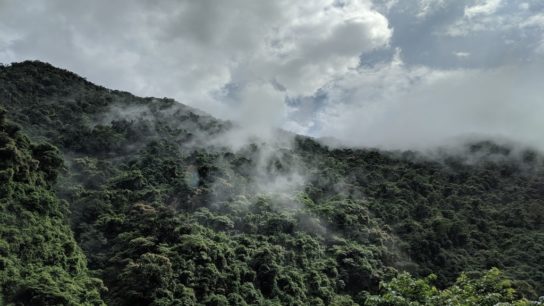The Living Planet Report, coordinated by WWF and released in October 2024, shows a dramatic decline in monitored wildlife populations over the past 50 years. However, data from the report must be carefully analyzed as misinterpretation may lead to a “doom and gloom” picture of wildlife loss.
—
The Living Planet Index (LPI), a measure of the average changes in abundance of monitored wildlife populations, is the main metric produced from the WWF’ report’s 2024 Living Planet Report. The account of current population sizes is compared to those estimated at the year 1970, and relative change since then is reported as the LPI.
The LPI is measured from close to 35,000 populations of vertebrate species.
What the Report Says
The report was updated with data for 3,000 new populations across 250 newly included species. Contrary to the 2022 report, LPI calculations in the latest study only include populations of native species.
The global 2024 LPI represents an average decrease of 73% in monitored populations compared to 1970 abundance. According to the report, this signifies that, on average, the size of monitored populations has decreased by 73% in the past 50 years (the 2024 report includes measurements up until 2020).
Regional and Habitat-Specific LPI
Findings of the report show that the LPI is different across geographic regions:
- North America: 39% decline
- Latin America and the Caribbean: 95% decline
- Europe and Central Asia: 35% decline
- Asia and the Pacific: 60% decline
- Africa: 76% decline
The LPI also varies depending on habitat type. The report presents monitored declines of 56% for marine populations, 69% for terrestrial populations, and most significantly 85% for freshwater populations.
Important Clarification on the LPI
The LPI is sometimes misquoted in news headlines, with claims of mass wildlife losses. While this trend of biodiversity loss is supported by other studies, the LPI does not actually represent biodiversity (species or populations) loss.
Hannah Ritchie, a researcher for Our World in Data, makes the important distinction that the LPI “does not tell us anything about: the number of species lost, the number of populations or individuals that have been lost, the number or percentage of species or populations that are declining, or the number of extinctions.”
When looked at in more detail, data from the Living Planet Report provides a less daunting picture for wildlife populations.
Issues With the LPI
The LPI only includes monitored species of vertebrates. But vertebrates make up only 5% of described animal species, and an even smaller portion of total life when plants and fungi are considered. This creates a large lack of true species representation.
Moreover, calculations of the LPI take into account things like relative population size (compared to other regions) and other inputs that lead to its final number. This creates a sensitivity to changes in already small populations.
These issues have led to statements that the LPI is not reliable as a measure of population decline.
An often more favored measure of biodiversity loss is the Red List Index. It shows global, regional, and taxonomic trends in extinction risk using data from the over 163,000 species assessed on the IUCN Red List of Threatened Species, providing much more robust and representative information on biodiversity loss and subsequently declines in both species and populations.
Why the Report Is Still Important
When carefully considered, the Living Planet Report provides important information to researchers and decision-makers alike. For example, the 2024 update highlights diseases as a quickly emerging threat to monitored populations, another needed consideration for species conservation actions.
As the report focuses on vertebrate species, conservation groups dedicated to these species can find the LPI and its data useful to highlight areas or taxa that are suffering more significantly. The report also includes insightful case studies on many of the unique and threatened species included in its data. These case studies highlight some critically declining species, and also some species that have experienced increases in population size due to conservation actions.
Like all scientific publications, the Living Planet Report has its strengths and weaknesses, while contributing important data to conservation when analyzed properly.
You might also like: 7 Solutions to Biodiversity Loss
This story is funded by readers like you
Our non-profit newsroom provides climate coverage free of charge and advertising. Your one-off or monthly donations play a crucial role in supporting our operations, expanding our reach, and maintaining our editorial independence.
About EO | Mission Statement | Impact & Reach | Write for us














